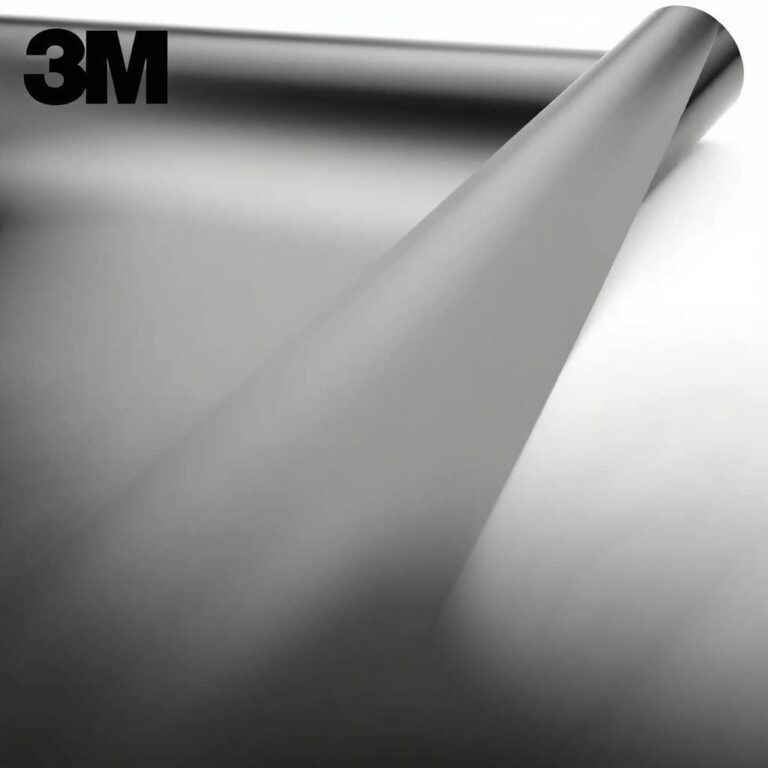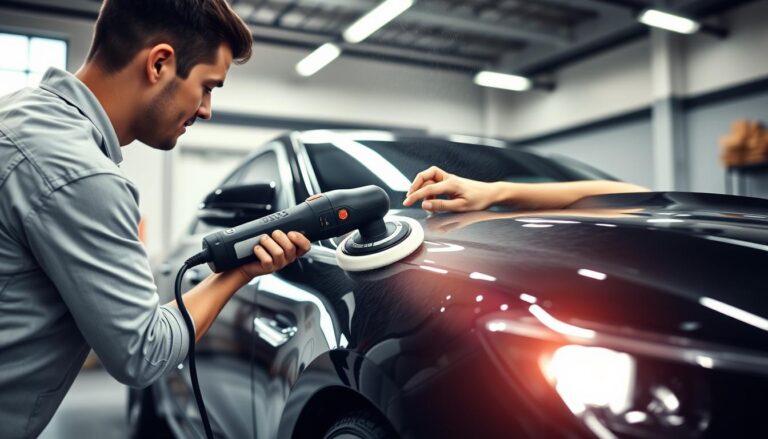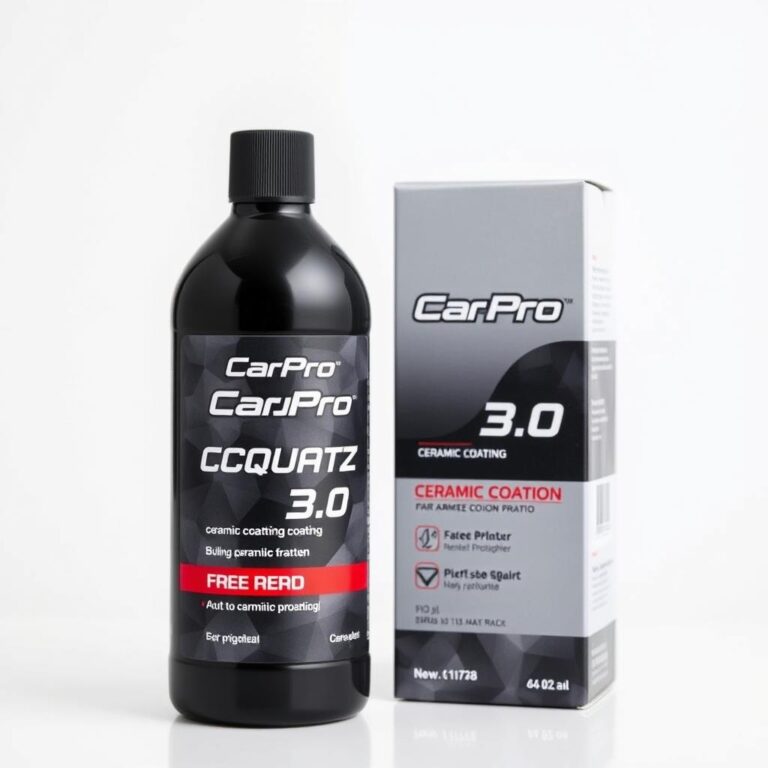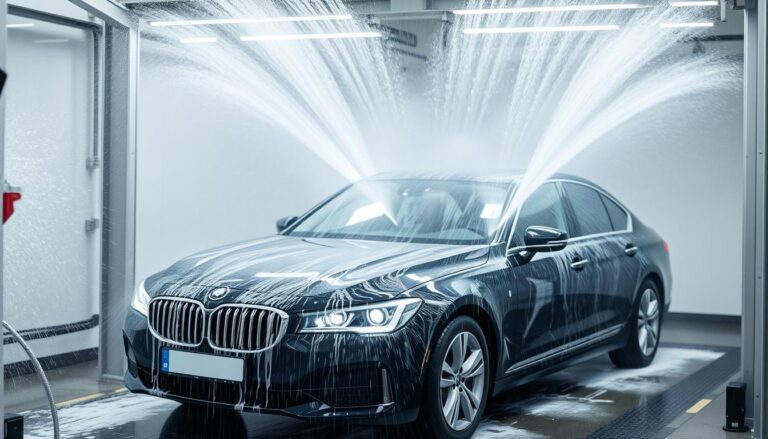Best Way to Clean Leather Car Seats – Quick Tips
For cleaner, long-lasting seats, here’s a simple method. Use a pH-neutral cleaner, a soft brush, and a 300–400 GSM microfiber cloth for wipe-downs. It’s great for modern coated leather, quickly gets rid of dirt, and keeps your interior looking fresh.
We talk about cleaning leather car seats safely and effectively here. Most new cars have coated leather, which does well with gentle cleaning. For uncoated or perforated leather, use less moisture and quick cleaning techniques. We’ll point out these different needs as we go.
Why choose this method? Tests and reviews show that specific leather cleaning products work best. Brands like Leather Honey and Chemical Guys make products that remove oils and stains without harming the leather. A neutral pH care approach, soft brushes for hard-to-reach areas, and microfiber cloths for dirt offer fast maintenance (10–20 minutes) and thorough cleaning in 45–60 minutes.
This is like smart upkeep for your car’s leather. It prevents sticky residues and maintains the leather’s original feel. Techniques like gentle vacuuming and careful moisture control stop odors and wrinkles. This way, you keep the leather in top shape.
When choosing products, focus on their features, not the brand. Look for neutral pH cleaners, soft brushes, and 300–400 GSM microfiber towels. Avoid products with solvents or harsh materials that could damage the leather. For seats with holes, apply cleaner to the tool, not directly on the leather.
To sum up, cleaning your car’s leather seats right means using balanced cleaners with gentle scrubbing and minimal water. This approach keeps the leather flexible, prevents slips, and protects the car’s value. It turns regular care into a safe, hassle-free task without risking damage from too much water.
Why Clean Leather Car Seats Matters for Comfort, Value, and Safety
For seats that stay looking new, clean them every 4–8 weeks and use conditioner 2–4 times a year. This keeps them flexible and resistant to UV damage. It helps maintain comfort on daily drives and safeguards the value.
What experts check: Appraisers look for wear on bolsters, stitches, and the topcoat. Dirt and oils can speed up damage, but taking good care of leather slows it down.
Protecting Resale Value with Proper Leather Seat Care
Appraisers and dealers often lower values for seats with cracks, stains, or wear in high-use areas. Regular cleaning removes body oils and dirt that harm the topcoat. Conditioning fights UV damage and keeps the stitches supple.
Light-colored interiors especially benefit. Clearing up denim dye early means less harsh treatment later. Good care is obvious at trade-in, leading to better offers.
Comfort and Appearance: Keeping Leather Supple and Luxurious
Clean leather lets air through better. This means seats won’t feel as hot or sticky in summer. Using a good conditioner keeps the leather soft and reduces noise.
Looking after your leather seats helps them keep their even color and natural shine. They’ll look neat, supporting a high-quality feel without too much shine.
Safety Considerations: Slip, Stain, and Allergen Reduction
Cleaning off slippery stuff like sunscreen or silicone sprays makes seats safer during sharp turns and sudden stops. With a proper finish, the seats improve grip but aren’t sticky.
Dust, pollen, and dander can build up in the seats. A vacuum and a wipe down with a microfiber cloth can reduce allergens. Dealing with stains early on also helps the leather last longer, cutting down the need for heavy-duty cleaning.
| Factor | What Appraisers Notice | Maintenance Action | Practical Outcome |
|---|---|---|---|
| Bolster Wear | Shiny patches, scuffs, micro-cracks | Leather car seat cleaning every 4–8 weeks | Lower deductions on trade-in |
| Topcoat Health | UV fade, dryness at stitch lines | Condition 2–4 times per year | Supple feel, even color |
| Residue Risk | Slick surfaces from sprays or lotions | Residue removal; dry-to-the-touch finish | Reduced seat slip under load |
| Allergens | Dust and dander in seams | HEPA vacuum plus damp wipe | Cleaner cabin air |
| Dye Transfer | Blue/black tint on light leather | Prompt spot cleanup; periodic care | Fewer deep corrections, better longevity |
Identifying Your Leather Type Before You Clean
To get good results and avoid damage, know your leather’s finish first. Many modern cars have leather that’s colored, coated, and sealed with something like polyurethane. This tells you which leather cleaners are safe and how they should be used for everyday care. It helps you pick products that won’t harm the leather and shows you the best way to use them.
Tip: Testing with a little water helps you pick the right products and techniques. This means less chance of damaging the leather.
Coated vs. uncoated leather: how to spot the difference
Try putting a drop of water on a hidden part of the leather. If it stays on top, your leather is probably coated. This kind can handle gentle, safe cleaners better. But if it soaks in and darkens, your leather might be uncoated or semi-aniline. These types need careful cleaning with less water and special foam cleaners.
- Entity → Attribute → Value: Coated leather → top layer → polyurethane film.
- Uncoated/semi-aniline → absorbency → high; use foam and blotting.
- Examples used by detailers: Colourlock Mild/Strong Leather Cleaner with a foam applicator.
Perforated leather considerations
If your seats have tiny holes for ventilation, be careful with liquids. It’s best to use foam cleaners and lightly damp cloths. Don’t rub hard so you don’t push dirt into the holes. This helps keep the leather nice while stopping smells and moisture from getting trapped.
- Foam density → control → reduces runoff into perforations.
- Wipe method → blot → limits streaks and keeps pores clear.
- Outcome → cleaner dries faster → better for how to clean leather car upholstery in daily use.
Checking your owner’s manual and care labels
Companies like BMW and Tesla tell you not to use harsh chemicals on their leather. They suggest gentle, balanced cleaners and say to vacuum often to avoid scratches. Check your car’s manual to see what kind of leather you have. Then, use the right cleaners and conditioners based on that info.
- Brand guidance → chemical limits → no harsh solvents.
- Finish type → aggressiveness → mild for Nappa; moderate for corrected grain.
- Routine → vacuum first → supports longer-term leather seat care.
Bottom line: Figure out the leather’s finish first. Then, pick cleaning methods and products that are safe for your car’s interior.
Tools and Cleaning Products for Leather Car Seats
For better and safer results in cleaning leather car seats, use special tools and chemicals. Pick products with a balanced pH to protect the seat’s top layer. Use low-output sprayers and different towels for cleaning and drying to manage moisture.

Leather car seat cleaner vs. gentle DIY solutions
A good leather cleaner for car seats is usually safer and gives more predictable results. It has a balanced pH to prevent color changes and keep the finish smooth. DIY methods are okay for minor dirt, but they require careful use and testing first.
| Brand/Model | Form/Function | pH | Use Case | Notes |
|---|---|---|---|---|
| Colourlock Mild Leather Cleaner | Pump foam | ~7 | Coated & semi-aniline | Foam limits over-wetting; controlled dwell aids leather car seat cleaning. |
| Griot’s Garage Leather 3-in-1 | Clean/condition/protect | Neutral | Maintenance cycles | Time-saver for routine care; balanced protection after wipe-down. |
| Leather Honey Leather Cleaner | Concentrate (dilute 1:32) | Neutral | Value-focused users | High coverage per ounce; use distilled water for mix consistency. |
| DIY Mild Mix | Distilled water + few drops fragrance-free baby soap | Very mild | Light soiling | Spot test first; not for heavy grime or dye transfer. |
Soft brushes, microfiber towels, and applicator pads
Pick the right tools for your seat’s texture and stitches. Soft brushes made from horsehair or boar’s hair can clean seams without damage. Use microfiber towels in the 300–400 GSM range for drying and wiping.
- Brushes: interior detailing sizes protect stitching and embossing.
- Microfiber: 300–400 GSM balances absorbency and glide.
- Applicators: closed-cell foam or microfiber pads give uniform coverage.
- Sprayers: low-output heads help control moisture on perforations.
pH-balanced cleaning products for leather car seats
Neutral pH products are safe for the topcoat and keep the color looking right. When picking cleaning products, look for ones that state a pH near 7. Make sure they are suitable for coated leather in cars.
- Neutral pH helps prevent tackiness or premature wear.
- Foaming formats reduce saturation on bolsters and perforated panels.
- Consistent results lower the need for repeat passes.
What to avoid: harsh chemicals and abrasive tools
Avoid things that might damage your seats despite giving quick results. Staying away from harsh items will help keep the seats looking good. It also helps maintain their feel and finish when cleaning.
- Alcohol wipes, bleach, ammonia, or APCs over pH 10.
- Magic erasers (melamine) and stiff nylon brushes.
- Steam near seams or perforations that can lift glue.
- Soaking sprays that pool and seep under the topcoat.
Use the right tools and balanced pH products for leather car seats. This keeps them soft, with true color, and makes them last longer without guessing.
best way to clean leather car seats
To make your seats look new and last long, use pH-balanced cleaners and gentle tools. Clean your leather car seats with care. Use light pressure, controlled application, and let them dry properly. This is key for good car leather upkeep.

Step-by-step prep: vacuuming and dry dust removal
Park in the shade and open the doors to cool the cabin below 85°F. This stops cleaners from evaporating too quickly.
Remove grit from seams, perforations, and piping with a soft brush on your vacuum. This step avoids scratches later on.
Spot testing cleaners to prevent discoloration
Test a bit of cleaner on a less visible spot, like the back lower seat edge. Wait 30–60 seconds. Then, wipe it with a white microfiber towel and check for color on the towel. If it stays clean, you’re good to clean the rest of the seats.
Gentle agitation and wipe-down technique
Don’t spray cleaner directly on the seat. Use an applicator pad or soft brush instead. Work in small areas with gentle pressure.
Move in circles or crosshatch patterns for up to 30 seconds. Then, use a clean, damp microfiber to pick up the dirt. Use a dry towel afterward to stop water spots. If a spot is stubborn, go over it again instead of scrubbing harder.
Dry time and ventilation best practices
Let the seats dry for 30–60 minutes with the doors open or the air on low. Don’t sit on them until they’re dry. Use different towels for light and dark leather to avoid dye transfer.
Wipe your seats weekly and plan a deep clean every month or two. This depends on your climate and how often you use your car. Staying on this schedule will help you keep your seats in top shape.
| Step | Entity | Attribute | Value | Why It Matters |
|---|---|---|---|---|
| Prep | Cabin | Seat temp | Under ~85°F | Improves cleaner dwell and reduces streaks |
| Debris removal | Vacuum + soft brush | Grit extraction | Seams/perforations/piping | Prevents abrasion during wiping |
| Safety check | Cleaner | Spot test | 30–60 seconds | Helps avoid discoloration and dye lift |
| Application | Applicator/brush | Coverage control | 12×12-inch sections | Even agitation without overspray |
| Soil removal | Microfiber towels | Two-step wipe | Damp then dry | Removes residue and prevents water marks |
| Dry/vent | HVAC or doors | Airflow | 30–60 minutes | Reduces moisture and re-soiling risk |
| Maintenance | Schedule | Frequency | Weekly wipe; 1–2 months deep clean | Keeps car leather maintenance consistent |
Deep Cleaning Leather Car Upholstery for Stubborn Grime
To clean leather car upholstery deeply without damage, use minimal moisture and short contact times. This method uses foam to reduce liquid and protect the leather’s topcoat, lifting hard-to-reach dirt that regular cleaning misses.

Using foam cleaners safely on leather car seat cleaning
Foam stops the leather from getting too wet, especially on textured surfaces and seams. Apply foam from products like Colourlock Mild or Strong to an applicator. Then, press to spread tiny bubbles that clean evenly. This technique works best with pH-balanced cleaners to keep the leather looking matte, not shiny.
Clean one section at a time, using quick, overlapping wipes. Change towels often to avoid spreading dirt. Keep the foam on the leather for a short time to protect it.
Targeting dye transfer, body oils, and embedded dirt
To remove blue jean stains on light leather, use specific dye removers or strong cleaners that are safe for coated leather. Limit the cleaning time to 30–45 seconds. If the towel starts picking up the leather’s color, stop and check again.
Oils from skin collect on parts of the car you touch a lot, like the driver’s seat. Start with foam, then scrub lightly and wipe away the dirt until it’s mostly gone. For tiny holes in the leather, gently apply foam and blot without pushing. Remove any dampness with a vacuum carefully.
When to repeat cycles and when to stop
Do gentle cleaning a few times rather than using stronger chemicals. Stop if the leather looks clean and smooth. Cleaning too much can wear out the leather’s protective layer. Check each section one by one.
If stains don’t go away after a couple of tries, think about getting professional help. They use safe chemicals or can match the original color while keeping the leather protected. They know how to clean leather car upholstery the right way.
| Product | Type | Key Attribute | Value | Use Case |
|---|---|---|---|---|
| Colourlock Mild Leather Cleaner | Pump foam | pH-balanced | ~7 (coated-safe) | Routine soil; textured grain |
| Colourlock Strong Leather Cleaner | Pump foam | Higher surfactant load | Short dwell 30–45 s | Dye transfer; heavy grime |
| Leather Honey Cleaner | Concentrate | Dilution control | Up to 1:8 | Body oils; broad maintenance |
| Meguiar’s Gold Class Leather & Vinyl Cleaner | Spray/foam via applicator | Residue-light | No greasy finish | Quick interior resets |
| Griot’s Garage Interior Detailer | Maintenance cleaner | Low moisture | Fast flash | Touch-ups near perforations |
Conditioning and Protecting Leather After Cleaning
After cleaning, apply a light protection layer to keep leather soft and reduce dye transfer. Choose products for modern coated leather that keep it supple without leaving residue. This approach aids in maintaining car leather and makes caring for leather seats easy and repeatable.

Choosing the right conditioner for car leather maintenance
For coated automotive leather, use non-greasy formulas. Choose products that are pH-balanced with UV protection. Match the conditioner to the leather’s age and your climate. New finishes do well with fast-drying coatings, while old, dry leather needs richer conditioners.
| Product | Type / Function | Key Attributes | Measured Values | Finish / Feel | Best For |
|---|---|---|---|---|---|
| Gyeon LeatherCoat | Coating-style protectant | UV inhibitors; hydrophobic layer | Durability: up to 3 months | Matte, dry-to-the-touch | Daily drivers; high-sun exposure |
| Meguiar’s Gold Class Rich Leather | Clean/condition/protect | Added UV blockers; balanced cleaners | Low-sheen gloss; quick wipe-off | Satin, not slick | Routine leather seat care in mixed climates |
| Leather Honey Conditioner | Restorative conditioner | High viscosity; deep penetration | Dwell: 2–24 hours | Rich, nourished feel | Older leather or dry regions |
Application methods to prevent over-saturation
Apply with a microfiber cloth and use just a pea-sized amount for every 6×6 inches. Spread it thinly across the leather, wait 5–10 minutes, then buff off any excess to avoid slick surfaces. With perforated leather, apply to the cloth, not directly on seats, and use a cross-wiping method to prevent liquid from pooling.
This careful application keeps leather maintenance easy and prevents problems like swollen seams and shiny spots. It also ensures products used later work just as well.
UV protection and interior shielding
The sun is the biggest danger to leather’s finish and color. Combine conditioning with parking in the shade, using windshield sunshades, and using interior protectants with UV blockers in hot states.
Reapply protective products every 8 to 12 weeks, or more often in sunny areas. This routine makes caring for leather seats more effective and keeps leather looking good over time.
Quick Tips for Daily and Weekly Leather Seat Care
Building simple habits can make leather seat care easier and increase seat lifespan. React quickly to spills and do routine checks. This makes car leather maintenance cheaper and keeps the appearance consistent.
Daily: Start by blotting spills before they set, then gently wipe with a moist microfiber cloth. Avoid harsh scrubbing, especially with colored liquids. After working out or using sunscreen, use a clean towel or seat cover. This helps stop oil from getting on the seats. It’s a smart way to keep your car seats clean without letting dirt build up.
Weekly: Vacuum with a soft brush attachment to remove dirt from creases. Then, lightly clean high-use areas with a weak, pH-neutral cleaner from trusted brands. Be sure to change the cleaning cloth often to prevent spreading dirt. Also, wash your microfiber towels without using fabric softener to keep them effective.
Seasonal: Apply a UV protectant before the summer starts to prevent color fading and dryness. Before winter, recondition the leather to keep it soft in the cold. These steps are key in leather care and keep your seats looking good with minimal effort.
Habits: Avoid products with a lot of silicone as they can attract dust and leave the surface greasy. When you’re going on long drives, wear clothes that won’t bleed dye or use a seat cover. Also, set reminders for every 4 to 8 weeks to clean your seats. This helps you stay on top of car leather maintenance.
| Routine | Action | Product Type | Why It Helps |
|---|---|---|---|
| Daily | Blot spills, then damp microfiber wipe | Water-only wipe; no dyes | Prevents staining and reduces abrasion from grit |
| Post-Workout/Sunscreen | Use towel or breathable cover | Cotton towel or neoprene cover | Limits oil migration; supports leather seat care |
| Weekly | Soft-brush vacuum; one-pass wipe | pH-neutral cleaner (diluted) | Maintains finish; aligns with the best way to clean leather car seats |
| Laundry | Wash microfibers without softener | Unscented detergent | Keeps towels absorbent; avoids residue redeposit |
| Summer Prep | Apply UV protectant | UV-inhibiting dressing (non-silicone) | Reduces fade and drying in high heat |
| Winter Prep | Light conditioning refresh | pH-balanced conditioner | Fights stiffness; supports car leather maintenance |
| Long Trips | Use color-stable clothing or protector | Seat cover with colorfast rating | Minimizes denim transfer and dye rub-off |
| Scheduling | Set 4–8 week reminders | Calendar or app alert | Ensures consistent care without overcleaning |
Common Mistakes to Avoid with Leather Seat Cleaning
To keep seats looking new, little habits are key. When cleaning leather car seats, control moisture, avoid strong chemicals, and clean regularly. Use cleaning products made for leather car seats that keep the leather’s balance.
Over-wetting and heat exposure
Too much water makes leather swell and stitching weaken. On seats with holes, water can get into the cushion and affect sensors. Put cleaner on a sponge, and use foam that stays on top when cleaning.
Heat harms leather quickly. Using steamers or leaving a car in the sun can damage the leather’s finish. Clean in a cool, shaded spot to protect the seat’s color and shine.
Using household cleaners that damage finishes
Products like bleach and vinegar harm leather by removing dyes and softeners. Tools like magic erasers can scratch the leather, making it look dull and dirty faster. Pick leather cleaners from well-known brands that have pH-neutral formulas.
Choosing the right cleaner helps keep leather seats looking good without needing to re-dye. It uses gentle cleansers and soft cloths for safe cleaning.
Skipping regular maintenance intervals
Not cleaning every week lets oils harden and dirt stick. Later, stronger cleaning might be needed to get back the smooth look. Spending 10 to 15 minutes each month with the right cleaners keeps leather perfect.
Avoid conditioners that are too oily as they attract dust, creating a dull look. Regular, gentle care keeps leather seats looking their best and feeling smooth.
When to Consider Professional Leather Seat Cleaning
It may be time for professional help if stains stay after two attempts. Stubborn issues like dye from jeans, ink spots, damage from sunscreen, bad smells, mold, or wear that shows the raw leather mean expert cleaning is needed. Special leathers or uncoated aniline can get damaged easily, making experts a better choice.
Expert cleaners have the right tools and proven methods. They will explain their approach, which includes specific pH-balanced cleaners, careful steam use for stains, and gentle foam extraction to keep stitches and holes safe. For faded color or scratches, many use repair solutions from Colourlock or Leather Repair Company and then reapply a protective topcoat.
Prices depend on location and car type. In the U.S., cleaning two rows costs around $100–$200. Extra services like protective treatments or color touch-ups may cost $200–$400. Always ask for clear details, including the chemicals used, and make sure they have insurance. For old or rare leather, ask for references and before-and-after pictures from similar projects.
Tip: Look for a cleaner who is transparent about their process and results. This ensures lasting and safe care for your leather seats.
| Service Element | What Pros Use | Why It Matters | Typical Impact |
|---|---|---|---|
| Chemistry Control | pH-calibrated cleaners (pH ~5–7) | Matches leather finish tolerance; reduces dye lift risk | Safer soil removal; stable color retention |
| Moisture Management | Foam extractors, low-moisture techniques | Limits over-wetting and seam swelling | Faster dry times; fewer water marks |
| Targeted Heat | Controlled steamer spot-work | Softens oils and ink binders without finish shock | Improved stain release with lower risk |
| Color Restoration | Colourlock, Leather Repair Company systems | Re-dye and re-topcoat worn areas | Uniform appearance; extended life |
| Documentation | Process steps, product list, insurance | Transparency and accountability | Consistent quality; clear recourse |
If you decide to clean your car’s leather yourself, be careful not to cause more damage. If you’re unsure, choosing a professional can save your seats’ comfort, look, and value over time.
Conclusion
If you want cleaner seats without damage, follow a simple plan. First, match the cleaner to the leather type. Use a pH-balanced cleaner, and avoid too much water. Work in small areas, use a soft brush or microfiber cloth, and wipe it dry right after. Always test on a small spot to make sure the cleaner is safe for your leather.
This method also works well for deep cleaning leather car upholstery. Avoid harsh chemicals by repeating gentle cleaning cycles. Tackle dye marks, body oils, and dirt with a light foam. Let it sit briefly. Then use conditioner sparingly and apply UV protection every few months. This keeps the leather soft and prevents color fade.
Regular light cleaning every week stops dirt from building up. This habit keeps the leather looking new and saves effort over time. It also helps the color and stitches last longer. If stains are too tough, or the finish looks worn, get a professional to clean it. They use safe methods that protect the leather’s coating, keeping it comfy and preserving its value.
In summary, use a gentle, pH-balanced cleaner for your leather car seats. Be gentle and patient with each clean. This careful approach is the best way to maintain your leather seats. It’s also the safest way to clean them without damaging the finish.







